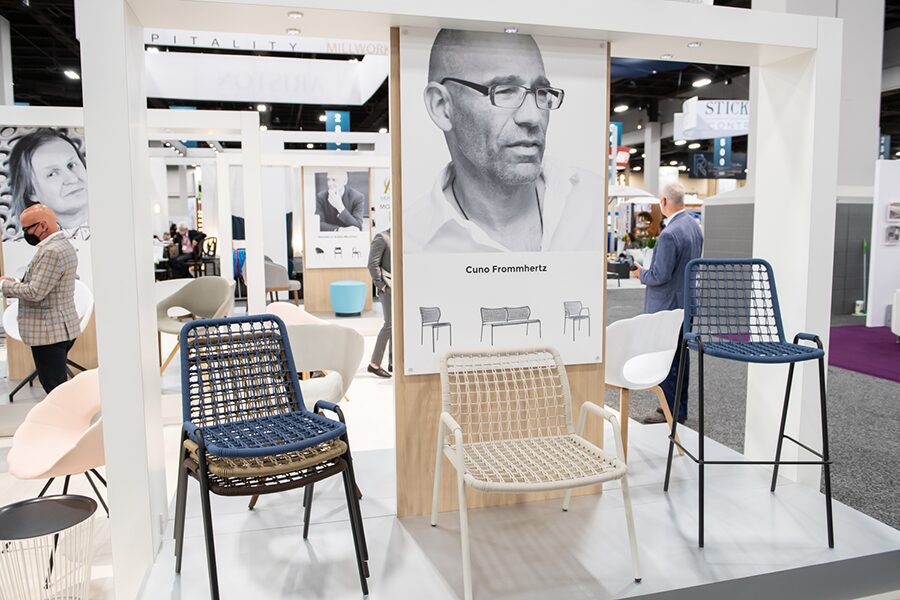Guy Rigby
Vice president, F&B, Americas
Four Seasons
Traditional hotel dining is a thing of the past, even for luxury brand Four Seasons. The hotel company’s vice president of F&B, Guy Rigby, chats about a few new openings, and why a local feel is better.
Can you summarize what makes the opening of Culina exciting from a brand perspective?
Culina – Modern Italian at Four Seasons Hotel Los Angeles Beverly Hills is our newest example of the successful evolution of Four Seasons approach to its restaurants. It is a prime illustration of how fresh design, quality ingredients, innovative cuisine, and the brand’s signature personalized service can effectively combine to create a distinct personality for new restaurants that resonates with both hotel guests and locals. Our goal has always been to operate some of the most sought after restaurants and bars wherever we are. Four Seasons is now putting special emphasis on this goal by tapping into special expertise for concept and design for example, to ensure these outlets are exciting to our guests and local patrons and compete with independent restaurants.
Culina was designed by EDG Interior Architecture + Interior Design and evokes the relaxed atmosphere of an Italian enoteca (local wine shop). The restaurant features an interactive Crudo Bar, a light bites bar and lounge, wine-list showcasing over 200 labels (the majority representing Italy’s finest) available by the bottle, carafe and on a rotating menu by the glass. A 200-year-old fallen magnolia tree has been crafted into communal wine tasting and dining table, which are complemented by displays of authentically sourced Italian artisanal specialties (such as truffle olive oil and Tuscan herbs), and a glass urn of house-made limoncello atop the bar. The menu is a testament to Californian’s love of simplicity; dishes inspired by Tuscany, Sardinia, Rome, Calabria, and Piedmont have all been created to spotlight flavors sourced though local producers.
As it is a bit of a departure for the brand, how is it indicative of the brand’s future direction in regards to F&B?
In previous years, the industry as a whole would approach F&B from mainly a hotel guest point of view, which resulted in the creation of restaurants that the local community viewed as special occasion dining venues, not a ‘neighborhood go-to.’ Today, we’ve shifted that focus because our guests’ focus has changed. When looking for dining options, our guests are seeking to experience the host locale, be elbow-to-elbow with residents and have a sense of place. Therefore, the restaurant concept and experience must be relevant to its location first and foremost while upholding Four Seasons’ highest standards of quality, service, and authenticity.
To put the above into action we look at the existing market to determine what type of dining venue would best serve the community. In some destinations, such as Los Angeles or even Vancouver, the market prefers a dining establishment that is welcoming and dynamic with special attention to fresh, quality local ingredients and exciting design and that’s why we created Culina-Modern Italian or YEW at Four Seasons Hotel Vancouver which was open just last year.
On the other hand, there are instances in other cities where the community has embraced and supported a fine-dining dining establishment. For example: Fountain Restaurant at Four Seasons Hotel Philadelphia has such a history with residents as it has been their home for special occasions since it opened. Additionally, Le Cinq at Four Seasons Hotel George V in Paris and Caprice at Four Seasons Hotel Hong Kong are award-winning, Michelin-Star dining establishments known throughout the world as ‘musts.’ Their on-going popularity illustrates how this format is indeed relevant to these destinations.
What other restaurant renovations/overhauls will be taking place this year? What other projects are you excited about and why?
The Ritz-Carlton Chicago, A Four Seasons Hotel is about to unveil a new brasserie concept. What is key to this project is the simplicity of the menu. The tendency of hotel-based chefs in the past has been to create very complicated food to showcase interesting techniques, knowledge of rare ingredients, etc. making the menu a bit intimidating to a casual diner. What we will do here is offer classic, comforting dishes of exceptionally high quality.


